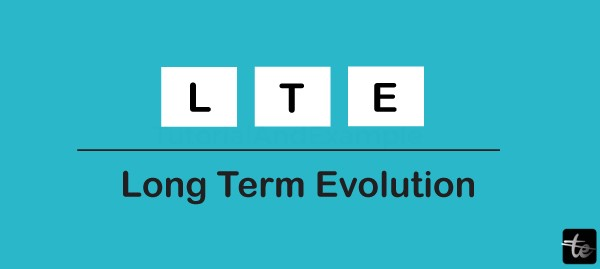LTE Full Form
LTE (Long-Term Evolution) offers faster and more capacity networks for cell phones and other devices, Comparing fourth-generation (4G) wireless technologies to third-generation (3G) technology.
Phone carriers employ LTE the internet, which enables wireless internet access for mobile devices to send data over the air to a customer's phone. LTE offered greater speed, efficiency, peak data rates, frequencies, and capacity flexibility than the previous 3G version.
With peak transfer speeds of up to 100 Mbps upstream and 30 Mbps upstream, LTE outperforms 3G in this regard. It offers lower latency, expandable bandwidth, and forward compatibility with the current Universal Mobile Telecommunications Service (UMTS) and the previous Global System for Mobile Communication (GSM) technologies. LTE-Advanced (LTE-A) was later developed, producing a maximum speed of about 300 Mbps.

LTE is weaker than 4G but still quicker than standard 3G, although it is often referred to as 4G LTE. Because of this, LTE is sometimes referred to as 3.95G. True 4G provides rates up to 1,000 Mbps, whereas LTE only reaches 100 Mbps. Nevertheless, other LTE variants, such as LTE-A, can reach 4G speeds.
Eventually, LTE spread worldwide as an established protocol currently widely used in places without 5G.
Construction of the present 5G standard, known as 5G New Radio, was directly influenced by LTE. Non-standalone 5G (NSA 5G) networks are the initial 5G networks that need a 4G LTE control plane.
Why is LTE called Long-Term Evolution?
LTE was created by the Third Generation Partnership Project (3GPP). The standard was referred to as the next development in mobile communications, building upon the requirements of the GSM and UMTS networks. 4G LTE is a typical marketing name for LTE.
Originally, LTE was not considered to be true 4G. 4G was first described by the International Telecommunication Union (ITU) as a cellular technology that would provide 100 Mbps for mobile users and 1 Gbps for stationary users. The ITU loosened their position in December 2010 and extended 4G to LTE and several additional wireless technologies.
How is LTE operated?
“An LTE network uses orthogonal frequency-division multiple access (OFDMA), a multiuser variation of the orthogonal division multiplexing (OFDM) encoding method for its downstream signal.”
With better spectral efficiency than 3G, OFDMA allows the LTE downstream to send data at faster data rates to numerous users from the base station. The uplink signal is transmitted using single-carrier FDMA, which lowers the mobile terminal's necessary broadcast energy.
The Internet Protocol and Transmission Control Protocol, upon which the higher layers of LTE are built, produce an all-IP network akin to wired communications. Data communications, including mixed data, phone, video, and texting traffic, are supported by LTE.
Multiple input from the user and multiple-output (MIMO) antenna technology, common to the IEEE 802.11n wireless LAN standard, are employed in LTE-A. Higher signal-to-noise ratios at the receiver are made possible by MIMO and OFDM, which enhance wireless network reach and productivity, particularly in crowded urban locations.
Devices using LTE-A must have a specific chip installed. Qualcomm, Nvidia, and Broadcom are manufacturers of LTE-A-compatible processors. Most smartphones are compatible with LTE-A.
How well-liked is LTE globally?
Different countries saw the deployment of LTE from telephone carriers on different dates. Whereas North American operators implemented the spec in 2010 and 2011, some European providers accepted it as early as 2009.
According to Opensignal, the average 4G connectivity across 87 countries was 80%. The three largest U.S. mobile carriers, AT&T, T-Mobile, and Verizon, received scores in the 4G accessibility category of 90% and higher in 2020. In North America and Western Europe, 3G is being replaced by 4G LTE and 5G, with the closure of major 3G networks expected to occur in 2022.
The Global Cellular Suppliers Association (GSA) estimates that by 2022, two-thirds of all mobile customers worldwide—or 6.6 billion subscriptions—will be connected by LTE.
Features of 4G LTE
LTE provides consumers with several benefits, such as the following:
- Streaming of both audio and video. Compared to 2G and 3G, LTE provides quicker download and upload rates.
- Instantaneous service connectivity. Users can communicate with others sans latency or jitter when using voice-over LTE.
- LTE-Advanced allows for even higher connections. LTE-Advanced offers upload and download speeds up to three times quicker than conventional LTE. Every LTE Advanced device is interoperable with conventional LTE backwards.
- Carrier grouping. With the addition of a frequency of up to 100 MHz among five component carriers (bands), each with a bandwidth of 20 MHz, this Advanced LTE feature increased network capacity. LTE-A devices enhance signal, speed, and reliability by combining frequencies from several constituent carriers.